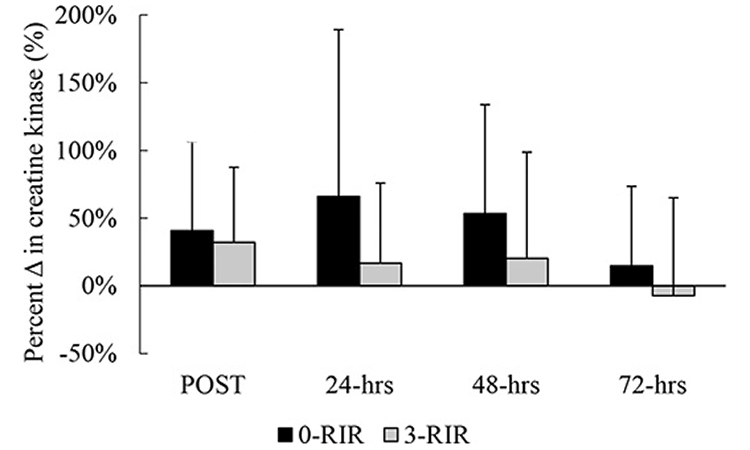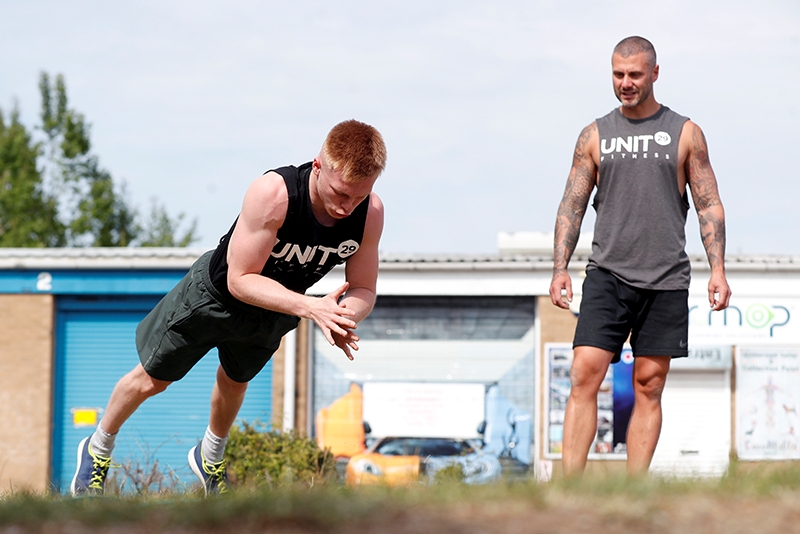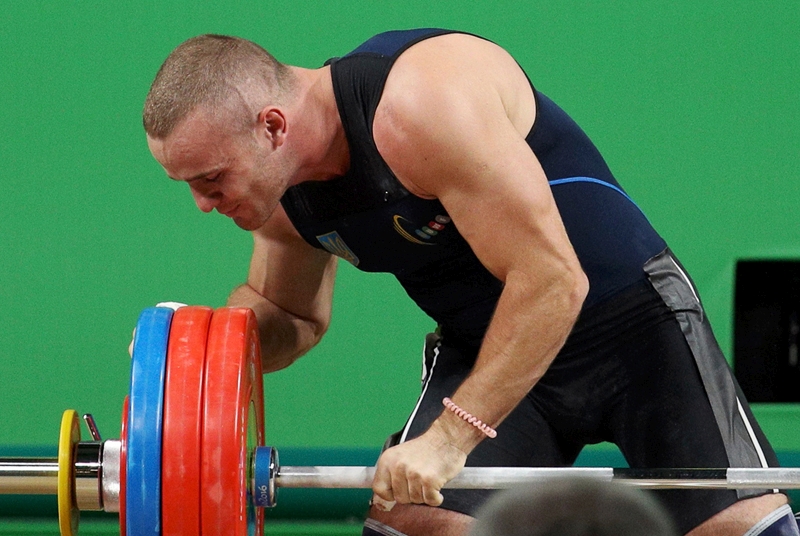You are viewing 1 of your 1 free articles. For unlimited access take a risk-free trial
Strength training: should you hold back for greater gains?

SPB looks at some brand new research on strength training, and why not performing all your sets flat out might yield greater benefits
As we’ve reported extensively in Sports Performance Bulletin in recent months and years, the evidence for the benefits of strength training for athletes at all ability levels is considerable and extremely robust. Adding some strength training to a program obviously delivers greater levels of muscular power and strength – a clear advantage for athletes whose sports require these qualities. But the benefits extend much further and to a wider range of athletes. By increasing musculoskeletal resilience, the risk of injury is significantly reduced(1).Moreover, there are considerable benefits for endurance athletes such as runners and cyclists. In particular, studies on runners and cyclists have shown that the use of lower-body, heavy-weight strength exercises can improve muscle economy(2). In short, this means that muscles become more efficient at converting chemical energy into forward motion, which in turn means that less energy and oxygen is required to sustain a given pace, resulting in less fatigue, especially in longer duration events.
The importance of excellent muscle economy for endurance athletes cannot be overstated as research shows that excellent economy is a key explanation for the superior performance of elite athletes. For example, in one study, researchers compared elite Eritrean runners with elite Spanish runners(3). Although both groups had very similar maximum aerobic capacities, the researchers were mystified as to why the performances of the Eritrean runners were consistently better than those of the Spaniards. Testing carried out on both groups showed they both had similar levels of aerobic capacity. However, it also revealed that the key physiological difference was the exceptional running economy of the African runners; at 21kmh (13.0mph), the Eritreans needed to consume just 65.9mls of oxygen per kilo per kilometre – compared with 74.8mls of oxygen for the Spanish runners (see figure 1).
Figure 1: Oxygen consumption per kilo of bodyweight per kilometre at 21kmh(3)

NB: lower oxygen consumption equates to superior running economy. The Eritrean runners’ superior running economy meant they needed 13.5% less oxygen per kilo of body weight to maintain a marathon pace. This explained much of their performance advantage over their Spanish counterparts.
How to train for maximum gains
The conventional approach for building strength has been to perform sets of exercises targeting the appropriate muscles using enough weight so that while a set of reps can be completed, it is only just possible. In other words, trying to perform another rep with strict form becomes impossible – also known as ‘training to failure’. However, in recent years, some exercise physiologists have questioned this approach; not only does it place large demands on the neurological system (leading to high levels of post-exercise fatigue), it also increases the likelihood of post-exercise muscle soreness – both of which could be counterproductive for athletes trying to maintain regular and consistent training practices(4-6). But there’s also another reason why training to failure could be counterproductive, and that is it might not actually produce the best results!Training to failure – pros and cons
If training to failure has significant downsides such as those mentioned above, what are the upsides and why has it been widely used by athletes and strength trainers over the years? Well research has identified that the overall amount of strength training volume or work completed plays an essential part in stimulating strength adaptations(7-9). It makes sense therefore that completing sets to momentary muscular failure is a strategy that can enhance training volume by maximizing the number of repetitions completed on each set. Another reason is that performing consecutive sets to failure ensures that an overload stimulus is present, and that effort is consistent – something that is require to produce adaptation(10). Against the training to failure approach however are rational counterarguments:- Compared with non-failure sets, RM sets require greater effort and produce more discomfort, inflammation, and muscle damage.
- Although muscle damage should stimulate protein synthesis, the effect declines with repeated bouts, and may be more about the muscle fiber repair process rather than improvements in size and strength – ie all important muscle GROWTH(11).
- Performing sets to failure may not actually maximize the amount of strength volume during both the training session because a) fatigue and damage delay the recovery process and prevent further training over the next few days(12) and b) sets to failure with limited recovery may well lead to a significant reduction in repetitions completed in the subsequent sets(13).
Proximity to failure
Is there a way to generate sufficient intensity and muscle stimulus without working all the way to failure? One possibility may be via the emphasis of ‘stimulating repetitions’(14). These are considered to be the reps that occur close to but not at failure. In practice, that would refer to the final 2–4 repetitions of a set at higher loads or the last five repetitions at lower-intensity loads. These reps are thought to be the ones that produce the bulk of a stimulus in a set. By reaching the point at which the set includes a couple of stimulus repetitions but not reaching failure, the idea is that fatigue can be minimized and recovery maximized while still providing a sufficient stimulus to the muscle worked.The good news is that there is recent research on using proximity to failure as an endpoint rather than actual failure, which has also been dubbed ‘repetitions-in-reserve’ (RIR) training(15,16). When conducting RIR strength training, the athlete does not reach failure but instead concludes a set once they sense that they cannot complete more than a specific number of additional repetitions within that set. In a way, training to failure is a form of RIR training, but one where the reps in reserve are zero – ie no more reps can be completed!
Although there’s not a large body of research on RIR training, two studies have suggested that an RIR strategy is comparable with (if not better than) a pre-prescribed strength training program based on a fixed number of sets and rep at a percentage of 1-rep max(17,18) . But how does RIR training compare with training to fatigue rather than a fixed number of reps? There’s only been one study on this, which was conducted in female youth basketball players(19). It found that RIR training resulted in greater strength and comparable power improvements in the bench press strength, as well as comparable gains in back squat strength when compared to training to failure. To date however, no research has been carried out on RIR vs. training to failure in experienced strength trainers, who are seeking efficient and effective ways to train.
New research on RIR training
To answer this question, brand new research just published in the Journal of Strength and Conditioning Research, has compared RIR training to training to failure in resistance-trained men with at least three years experience of strength training(20). This study examined the effects of the repetitions-in-reserve (RIR) strategy on resistance exercise performance, perceived effort, and recovery. To do this, 14 experienced resistance-trained men (average age 25 years, average weight 85kg [187lbs]) completed two separate bench press protocols in a randomized crossover fashion. The protocols consisted of the following:- The RIR protocol - Four sets at 80% of 1-repetition maximum to a self-reported 3 reps in reserve (ie they ended these four sets at the point they thought they could squeeze out 3 more reps) then a final set to actual failure.
- The failure protocol – where all five sets were performed to failure.
What they found
When the results were analyzed, the following conclusions were drawn:- The 3-RIR protocol allowed more repetitions and total work to be completed across the five sets than did training to failure (see figure 2).
- The work that was performed during the RIR protocol was carried out at a greater velocity on average than in the training to failure.
- The RIR protocol resulted in a slightly lower degree of CK production compared to the failure protocol (indicating less muscle breakdown), but this difference was not large enough to be considered statistically significant (figure 3).
- The follow-up bench press session was performed equally well following both protocols.
- The rate of perceived exertion (RPE) was significantly lower across the five sets in the RIR protocol (figure 4).
Figure 2: Total workload performed across the five sets

Solid lines/circles = failure protocol; dashed lines/open circles = RIR protocol. Although training to failure resulted in more work over the first two sets, a greater reduction in work volume was seen across sets 3-5.
Figure 3: Creatine kinase production 24-72 hours after each protocol

Black bars = failure training; grey bars = RIR training. Training to failure resulted in tendency towards higher levels of CK, although the differences were not large enough to reach statistical significance.
Figure 4: Rate of perceived exertion for each protocol

Solid lines/circles = failure protocol; dashed lines/open circles = RIR protocol. Across the five sets, a very significantly reduction in perceived exertion was noted in the RIR protocol. Only at the fifth set (where both protocols involved training to failure) did the perceived effort in RIR match that of failure.
Practical applications for athletes
Earlier in this article, we discussed the downsides of training to failure, most notably the fatigue and tiredness this can induce, along with potentially increased levels of muscle damage – damage that might not necessarily improve muscle strength adaptation in the longer term. The really promising aspect of this research is that it appears that RIR training reduced perceived effort, allowing for greater average barbell velocity compared with completing all sets to momentary muscular failure.Therefore, based on the quality of the repetitions, barbell velocity, and perceived effort across each set, RIR training may allow athletes to perform higher quality movements during each exercise (important when training sports skill-specific movements). It is also reasonable to assume that these movements could be better sustained in sessions where multiple exercises and additional sets are performed – ie how most athletes train when in the gym and working several body parts in one session.
A further benefit is that the drain on mental on neuromuscular energy is likely to be significantly less when using RIR training as compared to failure training. That leaves more mental energy for day-to-day training in between strength sessions and for subsequent strength sessions. In this respect, RIR training can be considered as a ‘fatigue management’ tool, helping to conserve energy and maximum gains can be achieved with minimum effort. If you regularly strength train to improve performance in your sport (you should!), and you normally train to failure, it could be well worth giving RIR sessions a try. Here are some tips:
- Begin by setting your RIR to 2-3 reps (ie ceasing the set when you reach the point where you feel you could achieve only 2 or 3 more reps).
- If in doubt where this point is, perform a set to failure on a separate occasion and simply subtract 2-3 reps off your failure reps – that’s your start point.
- To ensure maximum muscle stimulation, perform the very last set of reps in the series to failure.
- Keep your rest time between sets the same as in your training to failure sessions; you might feel ready to go again sooner (because you haven’t reached failure point) but the idea of RIR training is to reduce total fatigue accumulated while you train.
- Use your RIR sessions to focus on excellent form and movement quality.
- Use RIR sessions rather than failure sessions in the seven days or so before a match, game or other important event you need to perform in (to keep you fresher).
- To track your overall progress using RIR, you can perform an occasional training to failure session; the likelihood is that you will be pleasantly surprised!
- Br J Sports Med. 2018 Dec;52(24):1557-15
- J Funct Morphol Kinesiol. 2021 Mar 17;6(1):29
- Appl Physiol Nutr Metab. 2006 Oct;31(5):530-40
- Int J Sports Med 2016. 37: 295–304
- J Strength Conditioning Res 2020 34: 1237–1248
- J Strength Cond Res 2020. 34: 2867–2876
- J Strength Cond Res 2015. 29: 1349–1358
- Eur J Appl Physiol 2006. 97: 643–663
- Med Sci Sports Exerc 2009. 41: 364–380
- Eur J Appl Physiol 2015. 115: 2335–2347
- Eur J Appl Physiol 2018. 118: 485–500
- Strength Cond J 2016. 38: 42–49
- J Strength Cond Res 2019. 51: 94–103
- Beardsley C 2018. What is training volume? In: Strength and Conditioning Research
- J Strength Cond Res 2018. 32: 1352–1359
- Strength Cond J 2016. 38: 42–49
- J Strength Cond Res 2019. 35:2451–2456
- Front Physiol 2018. 9: 247
- J Sports Med Phys Fitness 2020. 60:1231–1239
- J Strength Cond Res. 2022 Jan 1;36(1):1-9
Related Files
Newsletter Sign Up
Testimonials
Dr. Alexandra Fandetti-Robin, Back & Body Chiropractic
Elspeth Cowell MSCh DpodM SRCh HCPC reg
William Hunter, Nuffield Health
Newsletter Sign Up
Coaches Testimonials
Dr. Alexandra Fandetti-Robin, Back & Body Chiropractic
Elspeth Cowell MSCh DpodM SRCh HCPC reg
William Hunter, Nuffield Health
Keep up with latest sports science research and apply it to maximize performance
Today you have the chance to join a group of athletes, and sports coaches/trainers who all have something special in common...
They use the latest research to improve performance for themselves and their clients - both athletes and sports teams - with help from global specialists in the fields of sports science, sports medicine and sports psychology.
They do this by reading Sports Performance Bulletin, an easy-to-digest but serious-minded journal dedicated to high performance sports. SPB offers a wealth of information and insight into the latest research, in an easily-accessible and understood format, along with a wealth of practical recommendations.
*includes 3 coaching manuals
Get Inspired
All the latest techniques and approaches
Sports Performance Bulletin helps dedicated endurance athletes improve their performance. Sense-checking the latest sports science research, and sourcing evidence and case studies to support findings, Sports Performance Bulletin turns proven insights into easily digestible practical advice. Supporting athletes, coaches and professionals who wish to ensure their guidance and programmes are kept right up to date and based on credible science.











